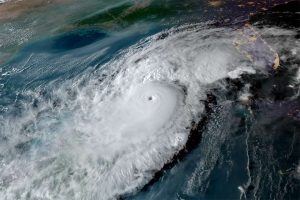 The Illinois Supreme Court has teed up a significant insurance question: Does a standard pollution exclusion bar coverage when the alleged “pollution” was not considered to be pollution when the policy issued—where the substance was lawfully emitted under an environmental permit?
The Illinois Supreme Court has teed up a significant insurance question: Does a standard pollution exclusion bar coverage when the alleged “pollution” was not considered to be pollution when the policy issued—where the substance was lawfully emitted under an environmental permit?
The court accepted a certified question from the Seventh Circuit on April 17, 2025, in Griffith Foods International Inc. v. National Union Fire Insurance Co.—a case that springs from the Sterigenics ethylene-oxide suits. The court’s agreement to consider the question signals the potential for a landmark ruling on the scope of pollution exclusions, with far-reaching implications for companies dealing with environmental and related toxic tort claims.
 Policyholder Pulse
Policyholder Pulse



 As of January 13, Southern California’s ongoing wildfires have reportedly destroyed more than 12,000 structures. Insured loss estimates exceed $25 billion, and the strong Santa Ana winds fanning the blazes are expected to continue into Wednesday.
As of January 13, Southern California’s ongoing wildfires have reportedly destroyed more than 12,000 structures. Insured loss estimates exceed $25 billion, and the strong Santa Ana winds fanning the blazes are expected to continue into Wednesday. In the aftermath of two powerful hurricanes the process of assessing the damage and rebuilding begins. Businesses suffered billions of dollars in losses during hurricanes Helene and Milton, both in physical property damage and disruption of their business (i.e., lost profits). That is precisely why businesses purchase property and other commercial insurance—to indemnify them when disaster strikes. However, it is not uncommon for businesses to be unpleasantly surprised when they present a claim to discover that their insurers are unwilling to stand behind the full insurance coverage they promised. This is particularly so in the case of a substantial loss, and even more so in the aftermath of a wide-area catastrophe—such as a hurricane or other natural disaster—because such catastrophes have negative repercussions on insurers given the number of impacted policyholders.
In the aftermath of two powerful hurricanes the process of assessing the damage and rebuilding begins. Businesses suffered billions of dollars in losses during hurricanes Helene and Milton, both in physical property damage and disruption of their business (i.e., lost profits). That is precisely why businesses purchase property and other commercial insurance—to indemnify them when disaster strikes. However, it is not uncommon for businesses to be unpleasantly surprised when they present a claim to discover that their insurers are unwilling to stand behind the full insurance coverage they promised. This is particularly so in the case of a substantial loss, and even more so in the aftermath of a wide-area catastrophe—such as a hurricane or other natural disaster—because such catastrophes have negative repercussions on insurers given the number of impacted policyholders. The Illinois Supreme Court handed down a big win for policyholders just in time for the holidays. In
The Illinois Supreme Court handed down a big win for policyholders just in time for the holidays. In  Temperatures in Arizona this week reached
Temperatures in Arizona this week reached  As summer vacation rolls around and hotels, restaurants and other hospitality companies gear up for a busy tourist season, coastal businesses in the U.S. Southeast, Puerto Rico and the Caribbean may be welcoming an unexpected guest—the Great Atlantic Sargassum Seaweed Belt. Businesses are bracing for this ten-million-ton mass of brown seaweed, which is floating on the ocean surface and extending from the west coast of Africa to the Gulf of Mexico.
As summer vacation rolls around and hotels, restaurants and other hospitality companies gear up for a busy tourist season, coastal businesses in the U.S. Southeast, Puerto Rico and the Caribbean may be welcoming an unexpected guest—the Great Atlantic Sargassum Seaweed Belt. Businesses are bracing for this ten-million-ton mass of brown seaweed, which is floating on the ocean surface and extending from the west coast of Africa to the Gulf of Mexico.